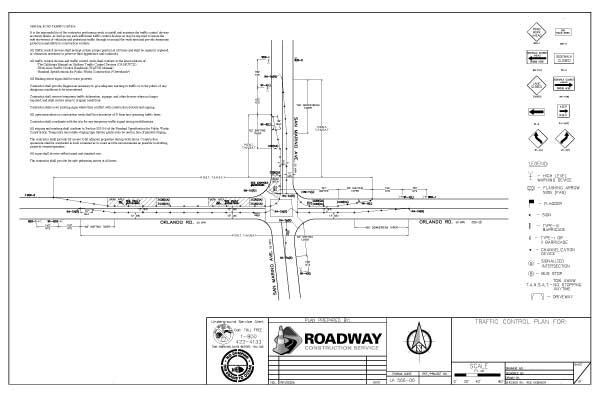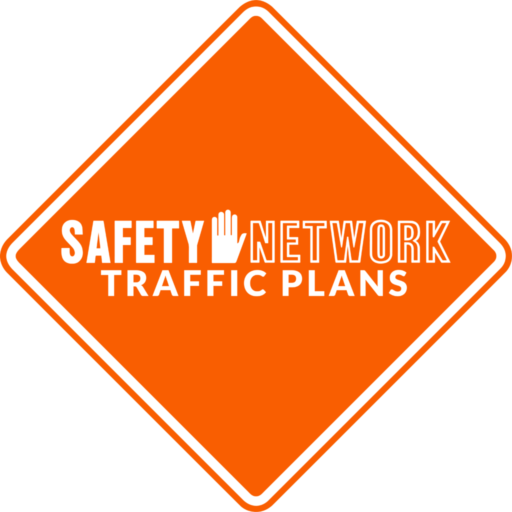When it comes to road construction, lane closures, or any traffic-impacting projects, a civil stamped traffic plan is a critical requirement. These plans not only ensure compliance with local regulations but also prioritize safety for workers and the traveling public. Safety Network Plans specializes in creating professional, civil-stamped traffic plans tailored to your project needs, helping you navigate regulatory requirements efficiently and safely.
Understanding the process of ordering a civil-stamped traffic plan can save you time, reduce errors, and ensure your project proceeds without unnecessary delays. In this article, we break down what to expect from start to finish.

Why Civil‑Stamped Traffic Plans Are Essential
Civil-stamped traffic plans are official documents signed by a licensed civil engineer. They demonstrate that your traffic control measures meet all local, state, and federal safety standards. Here’s why they are essential:
- Regulatory Compliance
Authorities require these plans for any project that affects public roads or traffic flow. A properly stamped plan helps you avoid fines, project delays, or legal complications. - Worker and Public Safety
Correct traffic management reduces the risk of accidents, injuries, and confusion at the worksite. Civil-stamped plans are designed with safety as a priority. - Project Efficiency
A professionally prepared plan ensures smooth traffic flow, minimizes congestion, and reduces the time required to complete construction or maintenance work. - Professional Credibility
Using a civil-stamped plan reflects professionalism and accountability, enhancing your company’s reputation with clients and regulators. (Civil Stamped Traffic Plan)
Step 1: Initial Consultation
When you reach out to Safety Network Plans, your first step is a consultation. During this stage:
- You provide details about your project, including location, duration, and type of work.
- The team evaluates potential traffic hazards and challenges.
- Preliminary recommendations are discussed to align with local Department of Transportation (DOT) standards.
Tip: Bring any existing project sketches, permits, or previous traffic plans to streamline the consultation process.
Step 2: Site Assessment
After gathering project details, a field assessment is conducted. This involves:
- Inspecting the proposed site to identify potential safety risks.
- Noting traffic patterns, peak hours, and environmental factors that may affect lane closures or detours.
- Measuring road widths, slopes, and sight distances to ensure your plan is feasible.
This step ensures the civil engineer has accurate, real-world data to create a plan that is both safe and practical.
Step 3: Drafting the Traffic Plan
Once the site assessment is complete, your traffic plan is drafted. Key components include:
- Lane Closures and Detours: Detailed maps showing which lanes will be closed and how traffic will be rerouted.
- Signage Requirements: Placement of warning signs, cones, barricades, and other traffic control devices.
- Work Zone Layouts: Specifications for equipment, worker positioning, and pedestrian pathways.
- Emergency Access Routes: Ensuring first responders and residents have uninterrupted access if needed.
The draft plan is designed in compliance with MUTCD (Manual on Uniform Traffic Control Devices) standards and local regulations.
Step 4: Review and Feedback
Before finalization, the draft plan is reviewed by you and your team. This collaborative step allows:
- Adjustments for project-specific concerns or client preferences.
- Verification of all safety measures, detours, and signage placements.
- Ensuring the plan is practical for the work schedule and site conditions.
Feedback is incorporated promptly to maintain your project timeline.
Step 5: Civil Stamping
The final step is obtaining the civil engineer’s stamp and signature. This officially certifies that your traffic plan:
- Complies with all local and state traffic control standards.
- Has been reviewed and approved by a licensed civil engineer.
- Is ready for submission to authorities or inclusion with project permits.
With a stamped plan in hand, you can confidently proceed, knowing your project meets all regulatory and safety requirements.
Benefits of Ordering From Safety Network Plans
- Expertise and Experience
The team at Safety Network Plans has extensive experience creating traffic plans for a wide variety of projects, from small-scale lane closures to large construction zones. - Fast Turnaround Times
Projects often require quick approvals. Safety Network Plans prioritizes efficiency without compromising quality. - Customized Solutions
Each plan is tailored to your site, project type, and timeline. Off-the-shelf templates are avoided in favor of precise, practical plans. - Ongoing Support
Beyond the civil stamp, Safety Network Plans provides guidance on implementing your traffic plan and can assist with revisions if site conditions change.
Key Takeaways
Ordering a civil-stamped traffic plan doesn’t have to be overwhelming. Safety Network Plans streamlines the process, ensuring:
- Full regulatory compliance
- Maximum safety for workers and the public
- Efficient project timelines
- Peace of mind with professional support
By understanding the steps—from consultation to civil stamping—you can make informed decisions and keep your project on track.
How to Contact Safety Network Plans
Ready to order your civil-stamped traffic plan or learn more? Reach out today:
- Phone: Call (559) 291-8000
- Email: help@safetynetworkplans.com
- Pinterest: Safety Network Plans
- Facebook: Safety Network Plans
- LinkedIn: Safety Network Plans
- Website: safetynetworkplans.com
Partner with Safety Network Plans to ensure your traffic project meets the highest standards of safety, compliance, and professionalism.
